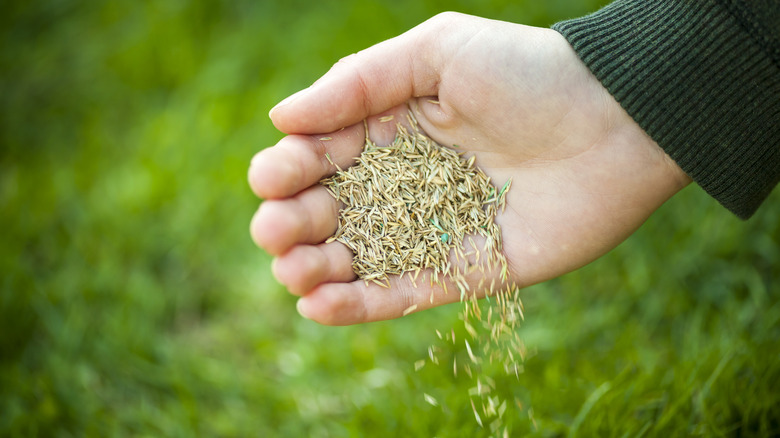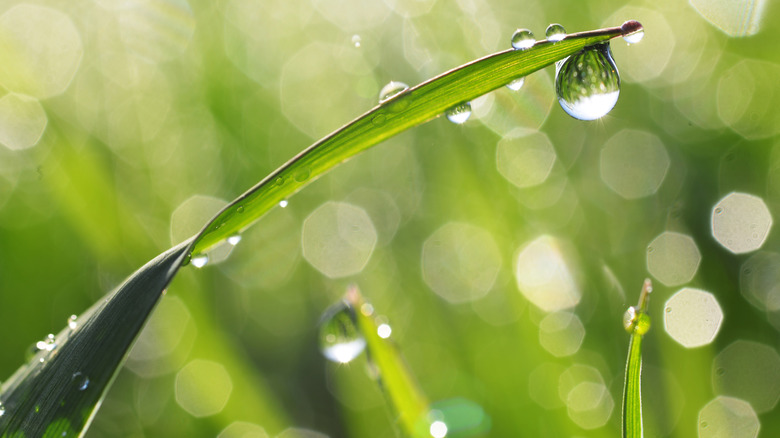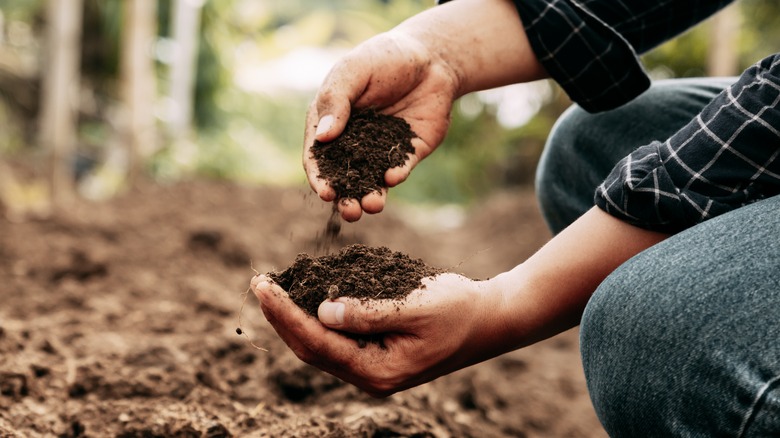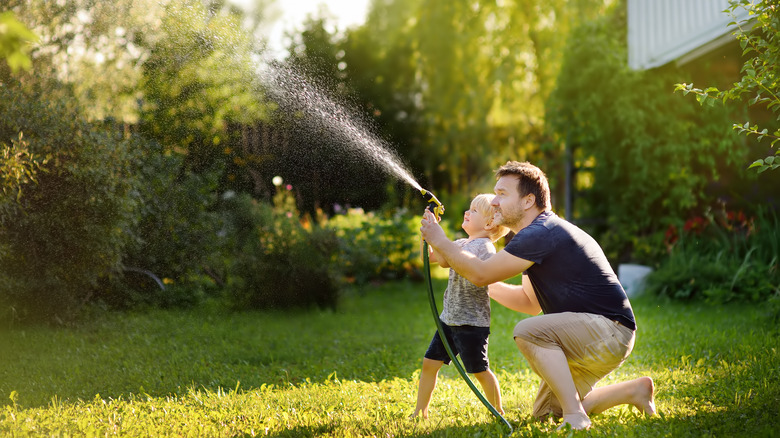The Best Time Of Year To Plant Grass Seed, According To An Expert
Once you've sowed your seeds and created a watering schedule, you may feel like your lawn's fate is out of your hands. According to Turfgrass Science at Purdue University, it's incredibly common for new lawns to become thin or completely fail within their first year of growth, often due to poor soil conditions or improper seeding techniques. Although a failed lawn can happen to anyone, it can still be disheartening if your fields of green turn into mounds of brown. Anytime you're struggling with gardening or lawn care, there's one important question you need to ask: W.W.E.D. — What would an expert do?
In an exclusive interview with House Digest, Derek Thomas, CPH, founder and expert at Thomas Landscapes, shares his best tips for planting grass seeds, saying, "The information provided here is for the best practices when planting grass seeds." He explains that there's no hard and fast rule for when to plant your grass seed. "The best time of the year to plant grass seed varies widely from region to region." The following tips can help you determine the best window for planting grass. However, if you're still having trouble, Thomas recommends, "Always consult with an expert in your region to verify any area-specific practices that will help to ensure your success."
Ideal conditions to consider
While there is no exact timeline for when to plant your grass seed, most grass should be planted during the spring or fall. Derek Thomas notes that there are some seasonal factors to consider before getting started. For instance, he warns not to plant grass seed during especially hot, cold, or dry times in your area. He says, "There should be cool and mild daytime temps, and evenings that are not dipping below 50 degrees." Depending on where you live, you may need to wait to plant until temperatures become more stabilized in the summer.
Temperature is important, but Thomas strongly advises that you pay attention to water if you want seedlings to sprout and succeed on your lawn. Thomas says, "Plan on planting grass seed in a time that is most likely to have precipitation and/or plan for ancillary watering. New seedlings need water. In most regions, the best time to encounter these conditions are spring or fall or when there is an upcoming rainy season." Most importantly, Thomas says, "Don't plant in the dry/hot times in your area." According to lawn care company TruGreen, most grass varieties can take anywhere between 5 and 30 days to germinate, so be sure to spread seeds long before there will be any frost or blazing heat. This will give them the best chances at forming a strong root system before the weather becomes unviable.
Prepare the proper soil
Derek Thomas says, "If planting a whole new lawn or just repairing damages in the lawn, always make sure you amend the soil prior to planting." Before spreading seeds, assess the soil for nutrients and breathability. If your soil is too dense, the grass will have a hard time penetrating the ground. However, loose soil can also present a problem, washing away seeds and sprouts, creating a lumpy lawn, and inviting room for weeds and fungus. If you've just laid fresh soil, use a lawn roller to lightly compact the soil before seeding, as this will create denser ground for the roots to latch onto.
The order in which you apply your grass seed and soil matters too. Thomas advises, "Always sow your seed then add an inch of a soilless commercial potting mixture that is good for topdressing the seeded area." If you aren't sure what kind of soil or potting mixture to use, Thomas highly recommends talking to the pros. "Ask your garden center what the best mixture is," he says. They should be able to tell you what you need to support your grass seed type and supplement the area's natural soil.
Water, water, water
Just because you've prepared your soil and planted your grass seed doesn't mean you're done cultivating a lawn. If he hasn't made it clear already, Derek Thomas reminds hopeful lawn growers that watering is absolutely crucial, especially in the first week or two after planting. Just make sure you're watering both frequently and correctly! Thomas says, "When watering, be sure to do a gentle soaking to not disturb the topdressing that was put on top of the seed mixture."
Of course, there can also be too much of a good thing. Thomas cautions us, saying, "Also make sure you do not over water. The area should stay moist but not have standing water." An oscillating sprinkler is perfect for rectangular lawns, while a pulsating sprinkler works for more round-shaped lawns. If you'd rather water by hand, a hose nozzle on the mist setting is ideal for keeping the seedlings hydrated without washing them out. Thomas says, "If all goes well in 7-10 days, you will have new grass plants." Finally, Thomas says to give your grass some time to settle before mowing. "Wait to cut the new lawn till the grass plants are about 2 inches tall."



